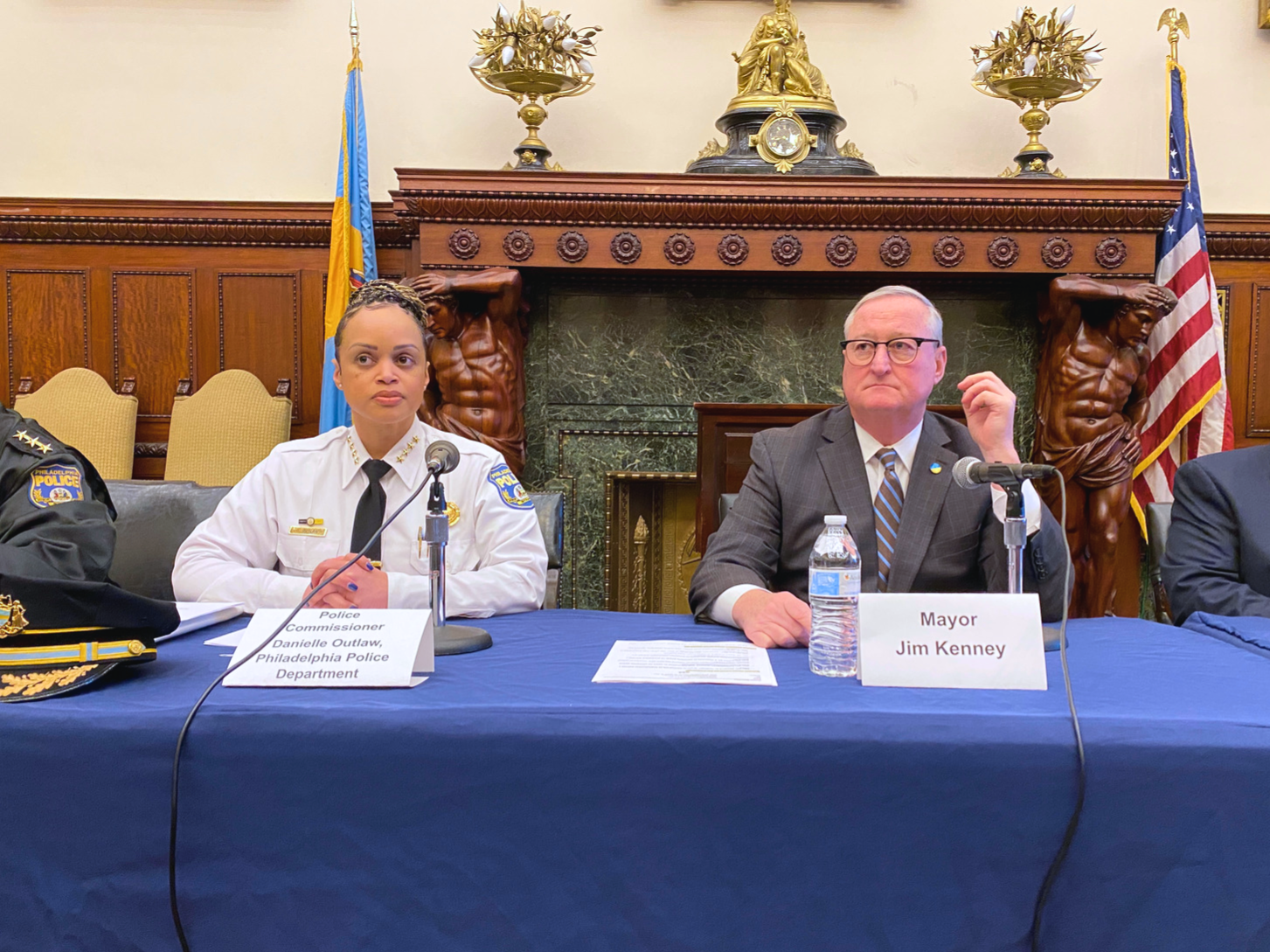Less than a week before Christmas, Philadelphia recorded its 500th homicide of 2022, marking the second year in a row that the city has reached this deadly milestone.
While this year’s murder toll will likely not surpass 2021’s record 562 killings, no one is celebrating the modest decline; 2022 is on pace to mark the second deadliest year in the city’s history.
The gun violence crisis also included more than 1,770 nonfatal shootings citywide this year. In response to the bloodshed, on December 20, Mayor Jim Kenney and Police Commissioner Danielle Outlaw held a news conference in City Hall to announce that 100 police officers will be deployed to the four highest-crime police districts in the new year. Those districts, in Kensington, North Philadelphia, and Germantown, account for 43 percent of gun violence citywide, they said.
“As we enter this holiday season I can’t help but think of all the incredible potential that has been extinguished by this loss of life,” Kenney said. “It is unconscionable that so many lives are lost to the scourge of violence, nearly 90 percent of which are at the hands of someone with a gun.”

More than 90 percent of this year’s fatal shooting victims were male, 79 percent were Black, and 48 percent were between the ages of 18 and 30, according to the Office of the City Controller. Six percent were younger than 18.
Those killed include Ikeem Johnson, 35, a sanitation employee for the city Streets Department who was fatally shot on the morning of November 18 while on his trash collection route; Tiffany Fletcher, 41, a city Parks and Recreation employee who was caught in the crossfire as teenagers exchanged shots at the West Philadelphia center where she worked on September 9; and Wendy Feldman, 59, who was killed on December 7 by her estranged husband — who then fatally shot himself — behind the hair salon she owned in Chestnut Hill.
Two police districts in North Philadelphia, one in Kensington and North Philly, and one in Germantown will receive the additional officers. Kenney called it the department’s largest redeployment in recent years and a “bold new step to help those who need it the most.”
Officers heading to the four districts will not be pulled from other patrol areas, but instead include a mix of new hires and those now assigned to administrative duties, police officials said. The four districts are among 45 high-crime “hotspots” that have received increased police attention since 2017.
More enhancements, including greater collaboration with federal and state law enforcement partners, will come to all 45 of those areas, said Outlaw.
The Police Department will also maintain some existing violence prevention initiatives in the new year, including its nonfatal shooting investigation unit. Launched January 31, the unit has made 420 arrests citywide, an improvement over the 235 arrests made for nonfatal shootings last year. The department will also continue to train and equip officers with Tasers, with 3,100 now having the nonlethal weapons, Outlaw said — a tactic that emerged in response to the October 2020 police fatal shooting of a mentally ill man who was brandishing a knife.
Outlaw said that reorganizing investigations of homicides and nonfatal shootings, as well as issuing mobile phones to officers and detectives, improved information sharing, resulting in the 7 percent decrease in homicides and 1 percent drop in nonfatal shootings this year.
“I just want to be clear that we understand what we are seeing is still entirely unacceptable, as the mayor mentioned, and that our work is far from done,” the commissioner said.
Historically, Philadelphia has suffered from chronically high levels of poverty and violence, both drivers of the city’s gun violence, said District Attorney Larry Krasner, who did not attend the mayor’s news conference.
Krasner said he believes the slight drop in killings is linked in part to the ending of COVID-19 shutdown restrictions, which led to normalcy returning to schools, organized sports programs, employment opportunities, and the court system. “Their being open is a constructive force in society,” he said. “It tends to prevent crime.”
Kenney attributed the slight decrease in homicides to Police Department reforms, city-funded community intervention programs, and officers taking more than 6,000 guns off the streets. “I do believe that the efforts that we are making, and will continue to make and expand, will continue to drive that curve down,” he said.
But Temple University Criminal Justice Professor Jason Gravel cautioned that the decline could be tenuous. “Less is always better, but when you look at what the comparison point is — the highest one in history — we’re not out of the woods yet” he said. “This could be simply a statistical artifact.”
Outside City Hall, amid crowds on amusement park rides and Christmas Village stands, a small group of community activists gathered to mark the 500th homicide and to rail against what they called city officials’ inadequate response to the bloodshed. “Why did they have to wait until the end of the year to announce what they’re going to do next year? Why didn’t they implement it already?” asked Jamal Johnson, founder of the annual Stop Killing Us march to Washington, D.C., to lobby lawmakers to help the city combat gun violence.
Ron Hall, of the Black Male Community Council of Philadelphia, said he regretted that more people did not turn out for the protest, given how acutely gun violence is affecting the city’s Black residents. “I can’t go to sleep at night knowing that I haven’t done anything,” he said. “I got kids. I got grandkids. I’m trying to instill that in them.”

